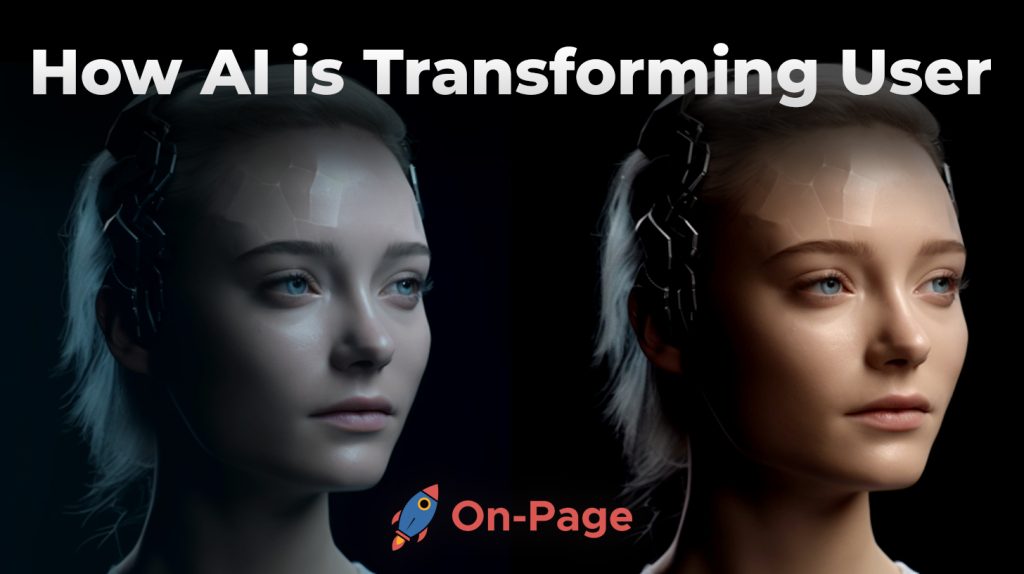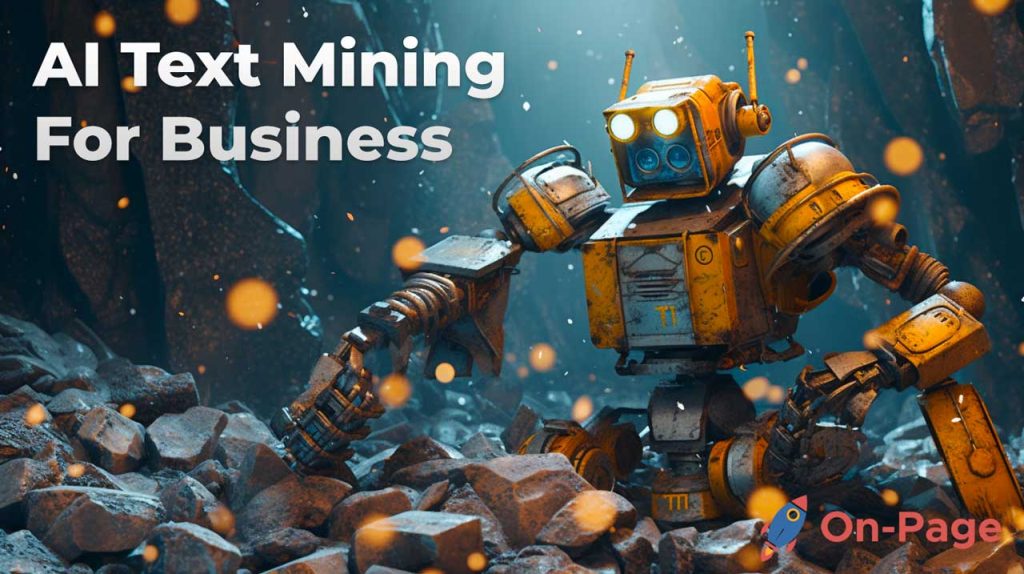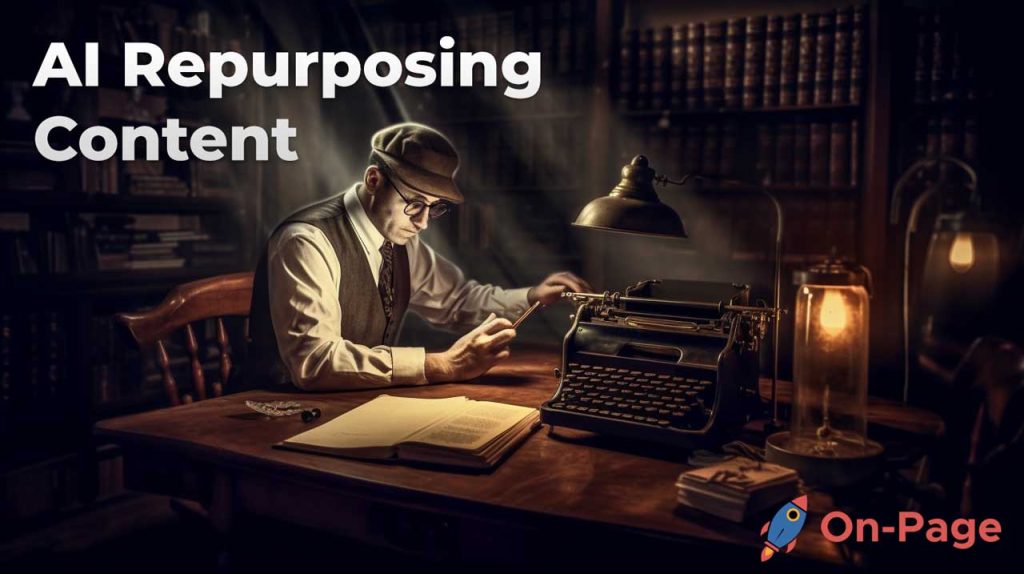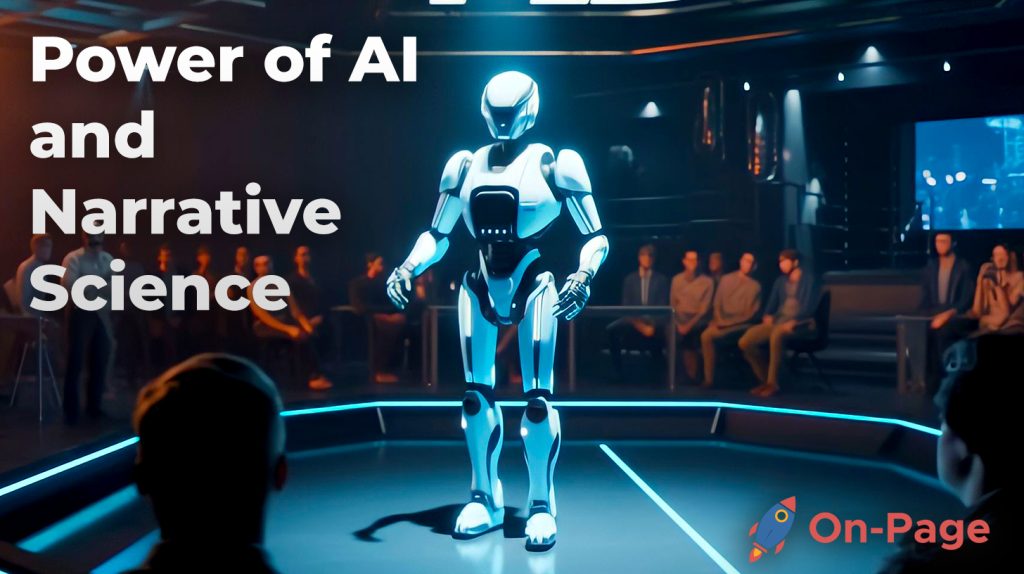Picture this: You’re sifting through an avalanche of user-generated content, desperately trying to find that gem of a comment or review that’ll perfectly resonate with your target audience. Suddenly, AI swoops in like Superman and not only locates the diamond in the rough but also optimizes it for SEO, garnering you more visibility, engagement, and conversions. Sound too good to be true? Well, think again! The AI-driven revolution is transforming user-generated content in ways that matter more than ever before. Curious to learn how this game-changing technology is rewriting the rules and future-proofing your business? Then buckle up because you’re in for an enlightening ride!

AI can assist in automatically moderating UGC by recognizing harmful language or identifying inappropriate content, improving the overall quality of user contributions. Additionally, AI technology can aggregate and analyze UGC to extract valuable insights into consumer preferences, helping brands make data-driven decisions and better understand their audience. By combining these two areas, businesses can harvest the benefits of both and ultimately create a more engaging and personalized experience for their users.
Understanding User-Generated Content
User-generated content (UGC) plays a crucial role in today’s digital landscape, as it is created by non-professional users rather than businesses or professional content creators. This can be anything from social media posts, blog comments, forum interactions, product reviews and ratings, to photos and videos shared on websites like YouTube and Instagram. UGC often takes the form of user feedback – both good and bad – which is not only valuable for other potential customers but also useful for companies to understand their target audience.
UGC is typically authentic and offers valuable insights into user behavior and preferences. Consumers today are savvier than ever before, meaning they are more likely to trust content created by their peers instead of brands. UGC allows individuals to share their experiences with others in a candid and authentic voice. Users often take advantage of social media platforms to express themselves through recommendations, stories, photos, or videos that can be beneficial for business growth.
Many argue that user-generated content benefits companies by facilitating engagement with target audiences. By allowing users to contribute content, companies create a sense of community around their brand where users can interact with each other and discuss common topics of interest. This engagement then leads to increased visibility on social media and search engines as well as improved customer relationships.
For instance, Tripadvisor has revolutionized travel planning by combining natural language processing (NLP) algorithms with millions of traveler reviews worldwide. Utilizing NLP allows the platform’s recommendation engine to analyze millions of reviews to provide personalized hotel suggestions based on unique preferences.
However, many businesses still struggle with how best to leverage UGC within their marketing strategy due to its inherent unpredictability. The authenticity and lack of control make it difficult for marketers to generate specific messaging regarding their products or services.
Some critics may argue that user-generated content cannot replace professional content because it lacks the level of quality and polish. However, this is where AI can play a significant role in transforming UGC.
With that said, let us explore the ways AI is changing the game and transforming UGC.
AI’s Role in Transforming UGC
Artificial intelligence (AI) is revolutionizing how we approach user-generated content by providing advanced technological solutions to issues such as creating higher-quality content, streamlining audio and video production, and leveraging natural language processing (NLP).
For instance, Adobe’s Sensei platform uses AI-powered tools to improve video editing workflow. It can automate repetitive tasks like color correction so that editors can focus on creative decision-making while the software does the heavy lifting.
One of the most significant limitations facing user-generated content has been the lack of quality control over submissions. However, AI algorithms can now scan user-submitted media to flag inappropriate content or detect whether a submission meets specific criteria like image quality and relevance.
Some critics argue that AI cannot replace human creativity and voice entirely. While AI might have more analytical insights for large datasets, it may not intuitively recognize cultural proper tone or nuances at a local level. It is crucial when using AI, not only to understand its limitations for context but also to combine human insight with AI-based solutions to maximize their potential benefits.
Using machine learning algorithms can provide companies with an opportunity to create unique user-generated content that stands out through automated video creation or photo-enhancement techniques like correcting framing or blurriness. By automating tedious tasks like formatting, generating product briefs, or selecting images per category – developers could dedicate their time towards ideating stories or improving campaigns instead of worrying about formatting text.
These are just some of the ways in which artificial intelligence is transforming user-generated content. Let’s explore its implications further.
Enhancing Content Quality on UGC Platforms
User-generated content (UGC) is an essential aspect of online engagement. It provides massive potential for creating unique and personalized user experiences, but it’s not without its challenges. One common issue with UGC has traditionally been quality control, given that the content comes from individual users who may not have any particular expertise or experience in writing. However, AI is now transforming how we view and approach UGC.
Companies such as Tripadvisor and Yelp rely heavily on user-generated reviews to provide valuable insights into the quality of establishments such as restaurants and hotels. However, the reviews are not always of high quality and can be filled with errors, inaccuracies, or inconsistencies. This makes it difficult for other users to rely on the content to make informed decisions about where to spend their money.
With AI-powered systems like natural language processing (NLP), UGC platforms can now better understand user-generated content and analyze it more effectively for quality assurance purposes. The NLP algorithms can identify misspelled words, misuse of grammar rules, and other editorial issues that can degrade the overall quality of the content.
Additionally, AI-powered tools can evaluate a piece of content’s underlying structure to check whether it accurately communicates the author’s intentions. For example, tools can assess whether a review accurately describes the restaurant’s ambiance or service quality by analyzing sentence structure, sentiment analysis, and other linguistic factors.
Deploying AI also enriches diversity by freeing contributors from thinking about technical details and allowing them to focus more on creative expression. It can be argued that y reducing contributors’ editorial burden, the AI system frees up users to innovate and explore new directions for their UGC.
Other AI-driven tools like On-Page.ai can even effortlessly optimize content to ensure it ranks high on search engines and beats the competition. Supercharge your UGC efforts today using Stealth Writer, our automated AI writing assistant that harnesses the power of AI and SEO to create unique and valuable content.
AI’s role in enhancing content quality on UGC platforms is no doubt instrumental in ensuring that users get the most out of online interactions by optimizing the quality and diversity of content available.
Streamlining Audio and Video Production
The rise of video-sharing platforms such as YouTube has brought about a revolution in how we consume audiovisual content. Today, people can record and share personal experiences and opinions with others worldwide with just a few clicks. From DIY guides to unboxing videos, vlogs to product reviews – everything can be captured on video and shared.
However, creating high-quality videos is not always an easy task. You need various technical abilities such as film editing, sound mixing, lighting skills, which require specialized knowledge. And yet this barrier is being broken down thanks to AI-powered tools streamlining the process, freeing up individuals from technical requirements.
Adobe Sensei is one such example – a suite of tools aimed at providing intelligent workflows for video professionals building all types of formats (Story videos or movies). Thanks to the machine learning algorithms’ application, Sensei can semi-automate many aspects of video creation processes like scanning footage for specific shots or adjusting edits based on specific visual styles desired.
Other AI-powered tools provide real-time feedback when recording audio and video content. They can detect ambient noise such as wind or traffic and automatically adjust audio levels or adjust color correction settings based on image data. Simplifying tasks like these improves quality control by efficiently pointing out mistakes so they can be corrected before publishing online.
However, some observers criticize the role AI plays in simplifying personal content production since part of the appeal of YouTube-style video creation lies in its unpolished, authentic portrayal of an individual’s personality. Some argue that by streamlining the production process, AI can destroy the very authenticity that made these channels so successful.
It might be comparable to the appeal of live concerts versus studio-recorded music: one is polished and professional, but the other has a raw and genuine sound that appeals on another level. Likewise, in video content creation, AI-enabled tools offer a range of benefits by streamlining technical tasks that would have before been too cumbersome for many users.
Therefore, AI is transforming how we approach audiovisual content creation by simplifying and automating various aspects of production to make creating high-quality UGC more accessible than ever before.
Leveraging Natural Language Processing
Natural Language Processing (NLP) is a branch of AI that holds immense potential for enhancing user-generated content. With NLP, AI models are trained to understand and generate human-like language patterns, enabling them to interact with users more effectively. This means that businesses can leverage NLP to make UGC-related processes more efficient, while also improving the overall quality of user-generated content.
For instance, companies can use NLP-powered chatbots to engage with customers automatically and in real-time. These chatbots can interpret customer inquiries and provide accurate responses instantly, without any need for human intervention. This not only speeds up response times but also ensures consistency across all customer interactions.
NLP can also be valuable in managing and sorting through large volumes of UGC data. With advanced language algorithms, AI models can detect context and sentiment within content, categorizing it according to specific characteristics or themes. This allows companies to pinpoint the most relevant pieces of content for their target audience, thereby improving engagement.
However, there are concerns that relying too heavily on NLP could result in an over-policing of user-generated content. While machine learning algorithms are designed to learn from data inputs, they may not always understand context or sarcasm as humans do. Therefore, it’s important to employ a soft touch when using NLP within UGC moderation practices.
Implications of AI-Enhanced UGC
The implications of AI-enhanced UGC are broad-ranging and multi-faceted. From content creation and moderation to audience engagement and growth, the integration of AI into UGC has significant implications for businesses operating in today’s digital landscape.
For example, the use of chatbots can significantly improve customer engagement levels by delivering personalized recommendations based on user behavior collected using natural language processing (NLP). These chatbots can gather and interpret user data to provide tailored recommendations, creating a more personalized experience for users.
Leveraging AI in UGC processes also has the potential to reduce operational costs significantly. By automating tedious tasks like content moderation or product reviews, businesses can focus on more high-level, strategic initiatives that drive growth and revenue.
Consider an e-commerce platform that receives thousands of product reviews each day. Moderating this volume of reviews manually would be a monumental task for any business. However, with AI-powered moderation tools like On-Page.ai, companies can filter through large volumes of content quickly and automatically, ensuring that only the most relevant feedback reaches their audience.
- A study conducted in 2021 revealed that businesses utilizing AI-generated content experienced a 40% growth in website traffic and increased conversion rates, versus those who relied solely on user-generated content.
- Research from the Content Marketing Institute found that integrating AI-generated content with user-generated content significantly reduces content production time by up to 50%.
- According to a report by Gartner, by 2025, nearly 70% of all online marketers will be utilizing a combination of AI-generated and user-generated content within their marketing strategies.
Future Trends in AI and User-Generated Content
As AI technology continues to evolve and become more advanced, we can expect to see even more transformative changes in the world of user-generated content. One of the most exciting developments is the increasing sophistication of natural language processing (NLP) algorithms, which are making it possible for machines to understand and replicate human communication more accurately than ever before.
For example, companies like OpenAI are developing state-of-the-art language models that can generate entirely new pieces of text that read like they were written by a human. This means that we may soon see chatbots and other types of AI-powered tools that can create content on their own without any input from humans.
Another trend we can expect to see is the continued growth of AI-assisted content creation tools like On-Page.ai’s Stealth Writer. These tools use NLP algorithms to help people write better, faster content by suggesting improvements to things like sentence structure, word choice, and phrasing. With these tools at their disposal, content creators will be able to produce high-quality articles and blog posts in a matter of minutes rather than hours.
Of course, there are also potential downsides to these advances in AI-powered content generation. Some critics argue that increased automation could lead to a loss of jobs for writers and other creative professionals. Additionally, some worry that AI-generated content may lack the nuance and personality that comes from writing crafted by a human mind.
However, just as the rise of digital photography didn’t spell an end for professional photographers but instead opened up new opportunities for creativity and innovation, I believe that AI-enhanced UGC has the potential to dramatically expand our ability to communicate with one another through digital media. Rather than replace human writers outright, AI will enable us to produce more content more efficiently than ever before.
And for companies hoping to increase their online visibility, tapping into the power of AI-generated and AI-assisted content creation is becoming more essential than ever. Today’s search engines are placing ever-greater emphasis on user engagement metrics like clickthrough rates and time on page, and companies that aren’t creating content at scale will soon find themselves falling behind.
That’s why I recommend On-Page.ai to anyone looking to take their SEO efforts to the next level. With our patented NLP algorithms, you’ll be able to produce high-quality content faster and more efficiently than ever before – without sacrificing any creativity or personality in the process. And with cutting-edge features like Auto-Optimize that can automatically optimize your content for SEO, you’ll be able to achieve higher rankings on Google’s search results page in no time.
Answers to Frequently Asked Questions with Detailed Explanations
What role do human moderators play in conjunction with AI tools in managing user-generated content?
Even as AI technologies become increasingly sophisticated, human moderators continue to play a vital role in managing user-generated content (UGC). While AI tools can help identify potential rule-breaking content, they lack the nuanced understanding of context and culture that humans possess. Moreover, UGC moderation often requires a judgment call, which is something that AI is not yet capable of making.
According to a study by the Pew Research Center, 62% of US adults believe that it’s primarily up to companies to ensure that their UGC platforms are free from offensive content. In light of this, many companies have invested in human moderators to help keep their platforms safe and welcoming for users.
While AI technologies can aid human moderators by flagging potentially problematic content, they cannot replace the expertise of a skilled moderator who can interpret the context and nuances of UGC. This was evident in Facebook’s experience with its AI-powered moderation tools earlier this year; despite using sophisticated algorithms, the platform failed to detect certain hate speech and extremist content that was promptly flagged by human moderators.
In conclusion, while AI tools play an important role in managing UGC, there is still no replacement for human moderators who possess the intelligence and empathy required to navigate this complex domain. Therefore, it’s crucial for companies to continue investing in both human expertise as well as AI-powered solutions to maintain safety on their platforms.
How is artificial intelligence currently being used to curate or filter user-generated content?
Artificial intelligence (AI) is being used to curate and filter user-generated content in several ways. Firstly, AI-powered content moderation tools can automatically detect and remove inappropriate or harmful content such as hate speech, trolling, and spam. This helps to maintain a safe and respectful online environment for users.
Moreover, some AI-based platforms are utilizing natural language processing (NLP) algorithms to analyze user-generated content and recommend relevant items based on their interests, activities, and behaviors. For instance, YouTube’s recommendation system uses machine learning to suggest videos that users are most likely to watch and enjoy, which accounts for over 70% of the platform’s watch time.
Additionally, AI is also used for personalized advertising by analyzing users’ browsing histories, search queries, and social media activity to display tailored ads. According to a study by Insider Intelligence, digital ad spending in the US reached $223.7 billion in 2021 with the majority of it being driven by programmatic advertising powered by AI.
While AI technology has undoubtedly transformed the way user-generated content is curated and filtered online while impacting ROI dramatically, there are concerns about data privacy and the potential for bias in these automated systems. As AI grows ever more advanced ability to produce content may become increasingly indistinguishable from human curation leaving us asking if this still qualifies as user-generated content?
Can AI technology improve the quality of user-generated content, and if so, how?
Yes, AI technology can definitely improve the quality of user-generated content in various ways.
- AI-powered tools like language processing and sentiment analysis algorithms can help identify and remove spam, hate speech, and irrelevant comments from user-generated content on social media platforms and forums. This not only creates a cleaner and safer online community but also improves the overall user experience.
- AI can assist in content creation by generating suggestions for headlines, captions, or even entire articles based on specific keywords or topics. This has already been implemented in newsrooms such as The Washington Post and Associated Press. The AI-generated articles are factual and well-written, requiring less editing than human-generated content while providing timely news coverage to users.
- AI can also improve user-generated content through image recognition and tagging. This allows visual content to be organized and easily searchable, making it more accessible to users who may be looking for specific images.
- According to a study by Accenture, 80% of executives surveyed believe that AI solutions will become “a critical part of their organization’s success,” indicating a growing trend towards reliance on AI technologies in all industries.
In conclusion, with the advancements in AI technology being made each day, there is no doubt that it will continue to transform and improve the quality of user-generated content across various platforms.
In what ways might an increase in AI involvement impact the future of user-generated content creation and consumption?
The increase of AI involvement in user-generated content creation and consumption will have a significant impact on the future. AI technology can generate text, audio, image, and video content with high accuracy and speed. This will lead to an increase in the quality and quantity of UGC available online.
For content creators, AI tools will provide them with personalized prompts and suggestions that enhance their creativity and efficiency. Additionally, AI algorithms will help maintain consistency in language and writing style, thereby improving the readability and usability of content.
On the other hand, consumers will also benefit from more personalized recommendations due to the use of machine learning algorithms based on individual preferences. Moreover, these recommendations will offer a more diverse range of content that meets the needs of different audiences.
One example of the impact of AI on UGC consumption is YouTube’s recommendation algorithm which uses machine learning to suggest videos based on users’ viewing history. According to a report by YouTube, over 70% of watch time is now driven by these recommendations. Another example is GPT-3 (Generative Pre-trained Transformer 3), an AI language model capable of generating human-like text. In a study conducted by OpenAI, it was found that GPT-3 can produce coherent and engaging articles close to those written by humans.
In summary, AI involvement in UGC creation and consumption will result in more efficient and effective content production as well as enriched user experiences through tailored recommendations. For instance, using an advanced SEO tool like On-Page.ai can help businesses create not just highly optimized content but also engaging content that boosts your target audience’s experience.
What ethical considerations should be taken into account when using AI in relation to user-generated content?
When it comes to the use of AI in relation to user-generated content, ethical considerations should be at the forefront of any decision-making process. One of the most significant concerns is ensuring that AI algorithms are free from bias, particularly when dealing with sensitive topics such as race or gender. For instance, an AI tool used by a beauty brand may discriminate against darker skin tones, resulting in a limited set of products and recommendations for users with darker skin. This is why it is crucial for companies to employ ethical standards that promote diversity and fairness among their user bases.
Another issue with AI and user-generated content is the potential for invasion of privacy. With AI tools, companies can gain access to users’ personal data, including their internet search history, social media activity, and even their location data. This can lead to unwarranted surveillance or targeted advertising practices. Therefore, companies need to ensure transparency and inform users about how and why their personal data will be used.
Finally, the issue of accountability must be addressed when it comes to the use of AI in relation to user-generated content. While machines may make decisions based on data inputs, ultimately, human beings are responsible for the algorithms programmed into these machines. In other words, it is humans who must ensure that AI systems operate ethically in all aspects.
In conclusion, while AI technology has revolutionized the way we interact with user-generated content online, it must be employed ethically and responsibly. This includes ensuring unbiased algorithms, maintaining individuals’ privacy rights, as well as retaining accountability and transparency within these systems. Only then can we guarantee a future where technology works for everyone’s benefit.




